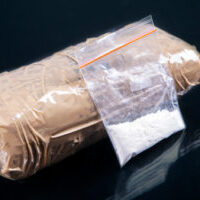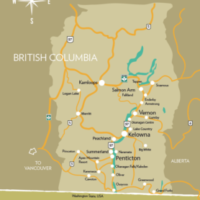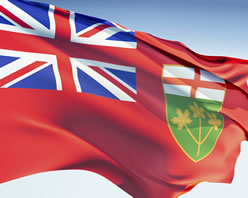Nova Scotia Government Funded Drug Rehab & Alcohol Treatment Programs
For this Provincial Snapshot learn how to access Nova Scotia government-funded drug rehab and alcohol treatment programs. Outpatient Drug and Alcohol Treatment Like most of the other provinces we have covered so far, it is best to start with your primary care provider when looking for addiction treatment. Your family doctor can provide you with referrals to both public and private treatment programs. Find your closest outpatient Community Mental Health and Addictions Clinics here. Most of these clinics are located in hospitals or as part of a health unit. These clinics have a team of mental health and addictions professionals who provide outpatient services like assessment, diagnosis, and treatment, individual and group therapy, as well as support for families and community organizations. Government Funded Inpatient Treatment Nova Scotia only has approximately 2 government funded inpatient treatment programs. Unfortunately, these government-funded drug rehabs are usually only 21 days, and this often includes the time it takes to detox. This is not considered nearly long enough to have an impactful change on clients. While there are a few community-based addiction services, the bulk of resources are located in or close to Halifax, creating a disparity in access to services. It is commendable that Nova Scotia has created opioid replacement programs to help wean people off. However, there seems to be more funding going towards medication than counselling and other treatment options. Nova Scotia government-funded drug rehab and alcohol treatment is lacking, especially in regards to inpatient facilities. New facilities with the capabilities to treat people for longer periods of time would help reduce the current lengthy wait times and hopefully help clients be more successful upon leaving treatment. If you are struggling with a substance or process addiction and are looking for drug and alcohol rehab in Nova Scotia, please contact our specialist for more help. References: Community Mental Health and Addictions Clinic JMC 2018.06.19 The post Nova Scotia Government Funded Drug Rehab & Alcohol Treatment Programs appeared first on Canada Drug...
Health Canada Urges Caution Despite Drug Testing
Every summer across Canada thousands of people attend music festivals, and many of them will consume recreational drugs while there. In an effort to curb overdose deaths, Health Canada has released warnings and advice for festival-goers this season. Drug testing has become more common, especially in BC as the province works to reduce its staggering amount of overdose deaths. Health Canada urges people to test their drugs prior to using them, but wants users to exercise caution as no test is perfect. Drug Testing Strips At the end of 2017 Health Canada recommended fentanyl test strips to help drug users make educated decisions about their drug use. During tests undertaken by the department the strips always detected fentanyl, however could not always detect fentanyl analogues like carfentanyl. In BC, these fentanyl test strips have been available at the supervised-injection site, Insite since 2016 and were made available at more Downtown Eastside locations in 2017. Vancouver Coastal Health Authority said substance users at Insite whose drugs tested positive for fentanyl were 10 times more likely to reduce their dose. The positive benefits of these strips has meant they are now more widely available across the province. Music Festival Etiquette Health Canada wants revelers to know: Illicit drugs can be tainted with all kinds of dangerous substances, including fentanyl Do not mix drugs and alcohol, and do not leave your drink unattended Never use drugs alone, and check on your friends As well, the government wants people to know what an overdose looks like: Difficulty walking and talking Very small pupils Cold and clammy skin Extreme drowsiness or inability to wake up Choking, gurgling, slow or weak breathing Opioid Overdoses Fueled By Fentanyl Prescription opioids have recently been blamed in the media for the surge in opioid addiction and overdose. However, opioid related overdoses and deaths are still rising despite declines in prescriptions written and total opioids dispensed by Canadian pharmacies. Illegal fentanyl and carfentanyl continue to be the driving cause of overdose deaths. Last year opioids killed nearly 4000 Canadians, up 1000 from 2016. In 2017, fentanyl was associated with 84% of overdose deaths in BC. If you are attending a music festival this summer and plan to take drugs, check to see if the event has a drug testing station. Many do these days and they could save your life! However, use caution as not all testing methods can test for everything, especially the highly toxic carfentanyl. References: Canadian Government Offers Tips for Safer Drug Use as We Head Into the Summer Music Festival Season BC Expands Access to Fentanyl Testing, Asking Users to Check Their Drugs Information Update – Drug Use During Festival Season The post Health Canada Urges Caution Despite Drug Testing appeared first on Canada Drug...
Drug Fact Sheet: Cocaine and Crack Cocaine
This month’s Drug Fact Sheet is looking at cocaine and crack cocaine. Where did this drug originate and why is it still so prevalent? History Cocaine is derived from the coca plant, native to South America. Indigenous people of the area have chewed the leaf for centuries in daily life as well as a part of religious ceremonies. Cocaine was only isolated from the leaf in 1860 by a German chemist, but around the same time, other Europeans were beginning to experiment with its recreational uses. In the latter half of the 19th century, pharmaceutical companies quickly picked up on the anaesthetic properties and marketed the substance to doctors. However, many patients died of accidental overdoses in surgery and so it did not remain in favour. Criminalization The USA introduced legislation to criminalize the sale and use of coca and opium products in 1914. However, cocaine had a huge resurgence in the 1980s, which included the introduction of crack cocaine. Crack cocaine is produced by dissolving powdered cocaine in water and ammonia and boiling this mixture down until it is solid. This is then broken into “rocks” and sold to people to smoke. Smoking crack elicits a strong yet short high, making it even more addictive than cocaine. Crack is also cheaper than cocaine powder, and in 1985 a rock only cost $5 in most US cities. By the late 80s, many cities who saw a rise in crime and deaths related to crack use declared a “crack epidemic”. Physical Effects Short-term effects of cocaine are euphoria, increased energy, and heightened sensitivity to sound and touch. It can also reduce the desire for food and sleep. Cocaine’s effects are felt quickly; within a few minutes if snorting powder and almost instantly if smoking crack. However, its effects are short-lived, usually lasting from a few minutes to half an hour. The physiological effects include dilated pupils, constricted blood vessels as well as increased body temperature, heart rate, and blood pressure. Cocaine-related deaths are usually the result of cardiac arrest or seizures. The mixing of drugs like cocaine and alcohol or cocaine and heroin increases the chance of overdose and death. Long-term use of cocaine has lasting effects on the brain. Illicit drugs not only affect the pleasure centres of the brain, they also affect the brain pathways that respond to stress. Research has shown that increased stress leads to increased desire for cocaine among regular users. Cocaine also reduces the efficacy of the decision-making area of the brain, the orbitofrontal cortex. Lack of self-insight and inability to recognize and adapt to negative consequences of continued drug use are effects of the cortex’s lowered function. Treatment Almost all drug treatment facilities in Canada will be able to help you or a loved one with cocaine addiction. It is one of the most popular illicit drugs, so drug rehabs will have treated many people before with a similar problem. Please contact our specialist and they will work with you to find the right facility for you. References: History of Cocaine Cocaine JMC 2018.06.19 The post Drug Fact Sheet: Cocaine and Crack Cocaine appeared first on Canada Drug...
Drug Busts Throughout Okanagan Valley
While the opioid crisis has affected people across Canada, BC has been one of the hardest hit provinces. Many news stories focus on the problems in larger cities like Vancouver, but forget that other more rural centres are in the midst of the crisis too. The Okanagan Valley, a vacation hotspot in the Interior approximately 4 hours east of Vancouver, has long been known as part of the “Coke Highway” and is a conduit for drug running across the province. However, recent coordinated RCMP efforts across districts have lead to some major drug busts, stifling the supply chain. Recent Okanagan Drug Busts On June 22, Vernon North Okanagan RCMP arrested a woman they believed to be linked to a drug trafficking group operating in the area. As part of this investigation RCMP executed a search warrant in the Lake Country area and found cash, 523 street-level baggies of a heroin/fentanyl mix, 457 street-level packages of crack cocaine, and 82 street-level packets of methamphetamine. The woman was found with street-level packets of drugs and a large amount of cash when she was arrested. The RCMP estimate the value of the drugs seized to be $30 000 and believe they have made a dent to the local drug trade by taking out this higher level operation. A week later, Penticton RCMP’s Targeted Enforcement Unit seized a “significant quantity” of various drugs, as well as a handgun in Summerland. A man at the scene was arrested, and charged with three counts of trafficking in controlled substances and two firearms offenses. These police raids are welcomed by the area as many families have already lost loved ones to opioid overdoses. In fact, Kelowna leads the entire country in opioid-related hospitalizations. According to 2016-2017 data, Kelowna had 37.9 out of 100 000 people hospitalized due to opioid poisoning. By comparison Vancouver, considered one of the most problematic areas, only had 20. References: Police Arrest One, Find $30k Worth of Drugs in North Okanagan Bust Police Nab Drugs, Firearms Kelowna Tops Canada for Rate of Opioid Hospitalizations The post Drug Busts Throughout Okanagan Valley appeared first on Canada Drug...
Indigenous Addiction Treatment in Canada
Indigenous addiction treatment in Canada is an important component of boosting First Nations mental health and wellness. There are many drug rehabs and alcohol treatment programs in Canada, and some serve specific populations. For example, last month we wrote about LGBT specific drug and alcohol treatment in Canada. This blog will explain why there is a need for indigenous specific treatment and how to access publicly funded First Nations drug and alcohol programs. Indigenous Addiction Treatment in Canada The federal government funds the National Native Alcohol and Drug Abuse Program (NNADAP) which incorporates prevention, research, treatment, and training. There are many NNADAP funded programs across the country. However, there are also provincial bodies that are First Nations specific. For example, BC has the First Nations Health Authority (FNHA) which helps facilitate 10 residential treatment centres in the province that are NNADAP funded. These treatment centres are relatively evenly spread across the province giving more coverage to rural communities. While services and client type varies between facilities, these drug and alcohol rehabs accept those with physical disabilities, concurrent disorders, clients stabilized on methadone or Suboxone, and clients on prescribed psychoactive medication. The federal government has a list of all its NNADAP funded facilities here. BC has 11, Alberta has 7, Saskatchewan has 10, Manitoba has 5, Ontario has 10, Quebec has 6, and the Atlantic provinces share 6 (though there are none on PEI). The majority of these Canadian drug and alcohol treatment facilities are inpatient and many offer outpatient services as well. While they provide much of the same treatment you would receive in a regular publicly funded program, they usually centre traditional healing methods. Traditional healing often takes place on the land and can involve different kinds of cultural ceremonies. FNHA defines traditional healing as the “health practices, approaches, knowledge and beliefs incorporating First Nations healing and wellness while using ceremonies; plant, animal, or mineral-based medicines; energetic therapies; or physical/hands on techniques”. Why Conventional Treatment Can Benefit From Traditional Healing A 2012 study published in Substance Abuse Treatment, Prevention, and Policy looked at cultural interventions to indigenous addiction treatment in Canada and the USA. Just over half of the programs the study looked at were residential, and all of them integrated both Western and “culture-based” treatment services. While there was a wide range of traditional healing methods implemented, sweat lodge ceremonies were used in 68% of treatment programs. The results showed that all areas of wellness were improved in these programs, particularly in reducing or eliminating substance use problems. Although the study concedes that more research needs to be done, there is strong evidence that traditional healing in addiction treatment is beneficial in all areas of wellness. If you are looking for more indigenous addiction treatment options have a look at our First Nations specific treatment page or contact our specialist for help. References: Addictions Treatment for First Nations and Inuit Traditional Healing Cultural Interventions to Treat Addictions in Indigenous Populations: Findings from a Scoping Study JMC 2018.06.19 The post Indigenous Addiction Treatment in Canada appeared first on Canada Drug...








